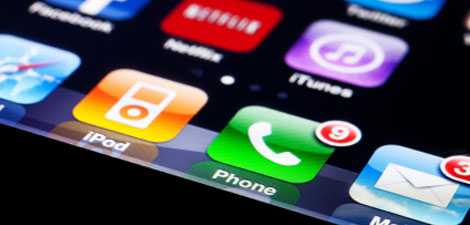There’s no official announcement from Apple yet, but iPhone assemblers including Hon Hai Precision Industry, Pegatron, and Wistron, are planning to begin producing a new lower-cost iPhone in February. Apple is expected to official announce the new phone in March. According to sources in the Apple-supply chain the phone will look similar to the iPhone 8 with a 4.7-inch screen, a Touch ID built in the home button, and will run on the same chip as Apple’s current iPhone 11.
Since there is no official announcement yet, there’s no official price either. The iPhone 8, which is still on the market, current sells for $449. The iPhone SE, the last lower-cost iPhone model, sold for $399 at its launch in 2016. (Apple plans the release of new iPhones with 5G capability, faster processors, and new 3D cameras on the back for the fall, according to Bloomberg.)
Apple needs a lower-priced phone to win back market share in China and to up its penetration of the next big growth market India. In both markets Apple is facing off again home-market Android phones selling for less than $200. The company has announced that it is hoping to ship more than 200 million iPhone units in 2020. A cheaper iPhone would be a key in reaching that goal.
One thought: Apple can’t cede the low end of the smartphone market but can it produce a competitively priced iPhone without killing its operating margins?
Thinking back to my days in business school, I remember a case study that looked at how Japanese and Korean tire makers had gradually squeezed U.S. tire makers out of the market. Part of the reason was technology: U.S. tire makers were slow to move to make the radial tires that the market increasingly demanded, sticking with the traditional radial designs until other tire markers had grabbed the edge in that market. But part of the reason was that U.S. tire makers were willing to let Japanese and Korean competitors to grab a large share of the market for lower-priced tires. Short-range decision on how to maximize profit margins that decision make good sense. The lower-priced tires carried a smaller operating profit than the more expensive models so why divert capital to a lower margin business? But the Japanese and Korean tire makers built up such huge volumes in the lower end of the market that they could cut the costs of production and marketing. They able to gradually walk uphill in the market and grab share in the high end until they wiped out their U.S. competitors. Venerable Firestone, for example, founded in 1900, was bought by Japan’s Bridgestone in 1988.
One of the reasons this “conquest” was possible is that U.S. and Japanese companies play by different rules when it comes to delivering returns for investors. Japanese investors are famous (or perhaps “notorious”) for accepting relatively lower returns on their capital for long periods of time. A Japanese CEO would have a much easier time making the “Go for the volume and the Hell with margins” decision than a U.S. CEO.
Which has considerable bearing on Apple’s reluctance to produce a lower-cost iPhone and its decision now that it has to. The question that investors will ask of the company a few quarters down the road will be “Yes, you’re selling more phones but look what’s happened to operating margins?” If a cheaper iPhone eats too deeply into Apple’s profit margins, U.S. investors won’t be happy with the company or the stock. Apple may have a way out of this since it’s fast growing services business carries higher profit margins than its hardware business. If services can pick up the profit margin slack, while a lower-priced iPhone claws back some volume, then this decision will turn out to be a very good one for Apple. If margins slip as Apple seeks to regain volume–as it must–the stock might be in for a “reassessment” from investors.
I don’t know that we’ll see every preliminary numbers to answer this question until the end of 2020, or later.
Apple has been a member of my long-term 50 Stocks Portfolio since November 8, 2016. The position is up 186.06% since then to the close on January 22.
On my JubakAM.com subscription site, today I shifted my rating on Apple with this post to “neutral” from “buy.” Back on December 12 I made Apple #6 in my Special Report 12 Bargain Stocks to Buy Now on that subscription site, saying that I thought Apple could climb another 15% from the December 12 price of $271 to $312. I got push back on that from some readers who rightly pointed out that Apple wasn’t cheap by any of the traditional metrics. I replied that I thought the short-term news on Apple sales would lead Wall Street analysts to upgrade their target prices. I certainly wasn’t claiming that Apple was a bargain that I’d hold onto for months and months and months.
The stock hit $317.70 today, January 22 and I think it will rest for a while after it’s most recent run. (Another 15% in a little over a month!)


